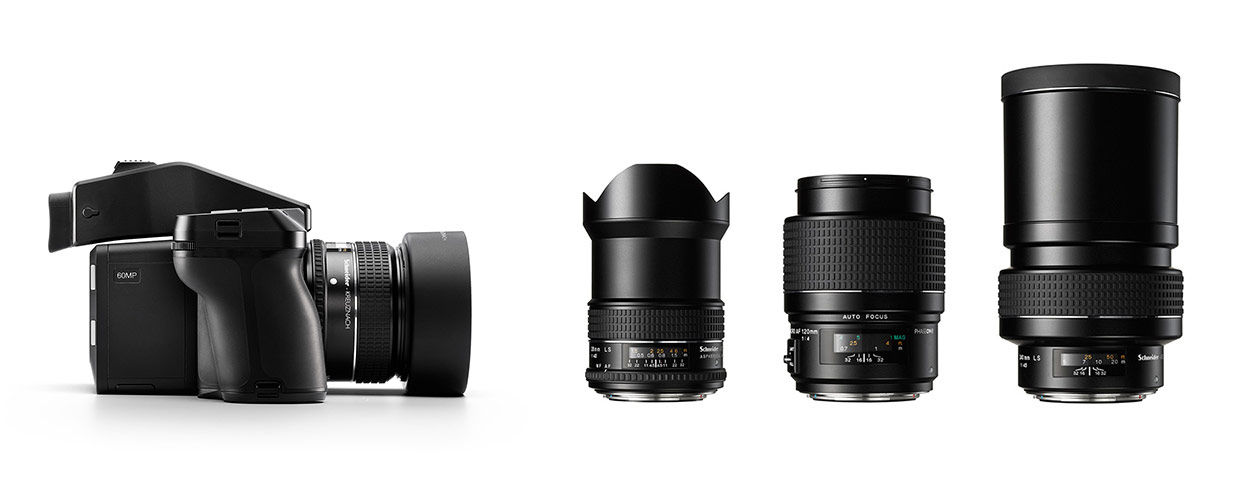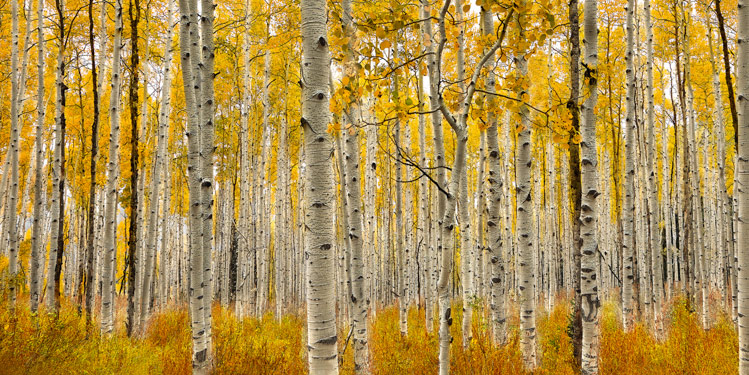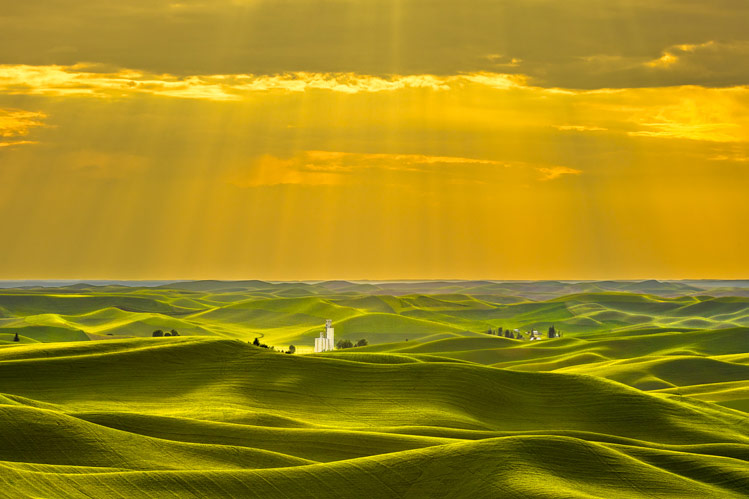Photographer Profile
A Conversation With Landscape Photographer Mark Handy
Editor’s note: Our most recent three Photographer Profiles have been a product photographer, a professional headshot artist, and a fashion shooter. While many of our clients are professional photographers making their living in a studio, we also have many clients who are enthusiasts or professionals shooting in the great outdoors.
Mark Handy is a landscape photographer based in California who travels the world capturing beautiful images in a single shot.
Mark’s Kit: Phase One IQ260 Digital Back, Phase One XF Camera Body, 80mm LS Schneider Lens, 120mm FP Phase One Macro Lens, 28mm LS Schneider Lens and 240mm LS Schneider Lens.
We interviewed him by email, the transcript of which is below:
How did you get involved in photography?
Interesting story. When my wife gave birth to our first child, she suggested that we take pictures of the little guy during each month for the first year of his life. Great. I was all for it. The only caveat, I explained, was that it won’t be me taking the pictures. Indeed, to that point I had never captured a serious image with a camera. Outside of a Polaroid, Fuji or Kodak disposable, I had no experience capturing images. Therefore, I suggested that we hire someone else to capture images of our son. My wife agreed. After several months, and after spending a small chunk of change (which started adding up), I decided that maybe it wouldn’t be a bad idea to learn how to capture some decent images — even if they were not professional. My goal from the beginning was to merely capture competent images that my son wouldn’t find objectionable later in life. And, of course, an ancillary benefit would be that I could save money if I got to the point where I was capturing decent, competent images. With that in mind, I approached a professional photographer friend of mine and asked if he’d mind giving me some basic camera instruction. He agreed to do it. After several months of capturing images, I was doing some decent work. My friend declared me ready to be set free after four months. I no longer needed his assistance, he said. So, to answer your question: I got into photography out of financial necessity. Ha!
What made you choose landscape photography?
I am certain that my arc is similar to others who have chosen to pursue photography as a hobby or as a profession. Simply put, I shot all kinds of subjects before zeroing in on landscape photography. From rocks and trees out in the yard, to people walking about the street, I have shot it. I think most photographers eventually find their favorite subjects after capturing an assortment of images. Ultimately, I found that I liked capturing landscapes more than anything else. Eventually, my like for landscapes evolved into love. I couldn’t imagine capturing anything else today.

What were you using before you switched to Phase One?
Before I tell you what I was shooting with, let me get something out of the way first. I have always been agnostic about gear. My primary concern isn’t the name brand, or how much something costs, it is about whether I am using the right tool for the job. Thus, when I first started out, I was using an entry-level Nikon camera. It was the right tool in light of my lack of experience. I didn’t know the first thing about photography and I didn’t have any clients. Why Nikon? Simple. My teacher used Nikon and I thought it would be easier to learn if I was using the same brand as the person teaching me. The buttons and functions would be familiar to my teacher and I figured the learning curve would be less steep this way.
What reasons did you have before you made the switch (i.e. what did you find lacking)? What bonuses did you find after you made the switch that you weren’t expecting?
After several years of using Nikon cameras — and ultimately ending up with a Nikon D800E — I found it necessary to get a different tool that would serve me and my clients better. By this time, my work was being sold to clients around the world and my work was being displayed in gallery settings. As clients demanded larger prints, it required me to reconsider the tool I was using to capture images. Secondarily, most of my competitors were capturing images with some kind of medium- or large-format camera as well. Discussing client tastes first, the decision to move to Phase One was an easy one. It was much easier to print Phase One files at large sizes than it was to print the Nikon files. At a certain level, it seemed obvious to me that the resolution of the Nikon files just didn’t hold up very well once I got to a certain print size. A single-panel print, using a Nikon D800E as a reference, held up well all the way to about 60 inches in length. Up until that point, I had the right tool for the job. Beyond 60 inches, though, the breakdown in resolution started to reveal itself. The breakdown in resolution was problematic for two reasons: one, the gallery director was offering images for sale that exceeded 60 inches. And, two, the image just didn’t seem to be clean, sharp, and crisp at larger sizes. Which leads me to the competitor angle. Would-be clients who went from gallery to gallery would often comment that my images didn’t look quite as sharp at larger sizes as some of the images they had seen at other galleries in the neighborhood. I couldn’t dispute that. After all, I had seen this for myself. I knew that, especially at larger sizes (greater than 60 inches on the long side), my images were not holding up well vis-à-vis other images that were being captured by competitors. Therefore, I ultimately decided to make the jump to medium format so that my work could be judged on an apples-to-apples basis. Before making the move to Phase One, my work was being judged on two bases: first, on technology (which couldn’t withstand scrutiny when files were printed large) and, second, on image appeal (client taste). Once I removed the technological impediment, I could get back to competing against other photographers on an image-presentation basis (i.e., image appeal to client). One of the things that I didn’t expect from the Phase One system, though, was its ability to easily produce single-image captures. The dynamic range of the Phase was off the charts; the pixel quality was amazing (large photo sites with plenty of room to breathe). With rare exception, the Phase can handle high-contrast scenes like no other camera system I have used. I don’t want to get too technical here but let me just say that the sensor in my Phase One digital back is a champ when it comes to light gathering ability. Because of this, I find that I do not have to bracket and stitch, which allows me to stick with my single-image-capture preference.

Why did you pick DT as your partner in this transition?
It’s one thing to buy an entry-level camera with little to no assistance — beyond doing your own homework. It’s quite another thing to invest in a camera system that costs more than a lot of cars do. It’s a serious purchase and I had a lot of questions that needed answering before I plunged into the Phase One world. While there are plenty of value-added resellers out there, I also knew — from experience — that they’re not built the same. Far from it. Therefore, I have always been on the hunt for companies that provide, on a consistent basis, a premium service. In other words, it’s not enough to sell me a premium product. I’m looking for hand holding (when necessary) on the front side and back side of the sale. That’s where Digital Transitions comes in. When it comes to customer service, Digital Transitions is best in class.
How did you evaluate your options? Was DT helpful in this process?
The great thing about DT having a physical presence on both sides of the United States (in Los Angeles and New York City) is that it’s not difficult to get a hands-on demonstration of products when you need one. Ken Scott, branch manager for the Los Angeles office, came down to San Diego to show me everything the new system could and would do for me. While the Phase One system is not tremendously complicated to operate, the features that do exist need some explaining. Ken was great. He had complete mastery over the hardware and he understood all of the capabilities of the system. After Ken answered dozens of questions, which were given in rapid-fire succession at times, I felt comfortable giving my business to Digital Transitions.

You say in your artist bio that your images reflect the pre-visualization that you see in your mind’s eye before you get in the field. What is the scouting/planning process you go through for your photography?
My portfolio is comprised of iconic subjects as well as one-off subjects that can never be captured again. The core of my travel schedule is typically built a year in advance. In 2017, for example, I have South America (Patagonia), Australia, New Zealand, and the Palouse (Idaho and Washington) locked down. Meanwhile, I will add additional locations throughout the year and slot them between the locked-down spots if I can make it work. Thus, I would like to add the Canadian Rockies to my calendar in 2017 if time and logistics permit. Similarly, I would like to add an east-coast (United States) trip to my schedule in 2017. We’ll see if that happens. Because I have already been to Patagonia, I know what I was unable to shoot during previous trips. Those missed images go to the top of my shot list the next time around. In 2017, I am making it a point to capture more images that focus on water. The waterfalls in and around the Lake Capri area of Argentina will be captured this time around. I imagine capturing these images a certain way. And, because I know what I am ideally looking for, I will stay at the location until I get the image I want. Of course, I have been to this region before, so it’s a little easier for me to visualize what an image might look like. I find it more challenging when I’ve never been to a location before. In that case, you’re relying on other images, captured by other photographers, to show you what is possible. I am not looking to comp-stomp other photographers but I am looking to see what the quality of light looks like, what the terrain looks like, what the foliage looks like, etc. I want to be as familiar with an area as possible long before I get there. I use Google Earth to help me do that. I spend hours and hours researching areas. I check to see if a particular area is accessible by foot (by seeing if foot paths and other things can be seen via Google Earth). I also use Google Earth to find great spots to capture images. It’s not unusual for me to travel along a river using Google Earth as my guide. I’ve found some great places to capture images this way. In addition to using Google Earth, I use good, old-fashioned networking. I have developed sources over the years to help me with current conditions on the ground. Having a well-placed ranger in the forests of Utah, for example, is priceless. It’s unreasonable to think that I can fly into Utah every week during the fall to time fall colors just right. Instead, I have a few local rangers that I call weekly — and sometimes every few days — so that I can gauge how close optimal conditions are in particular areas. This is indispensable information to have. Likewise, I keep in contact with fellow photographer-friends who live in these areas as well. They’re invaluable in providing much-needed information. There are many other things I do prior to getting to locations, but suffice it to say that I like to do exhaustive research before I get into the field.
Finally, what has been your favorite place to shoot and why?
I’ve been asked this question many times. It’s a tremendously difficult question to answer, frankly. Every place has its wonderful attributes. Rather than nail down one place in particular, let me point out a few places that I love shooting. The Palouse region of the United States has to be right near the top for me. I used to live in this area, so I know the area well. The rolling hills of wheat, along with the shadows and light that hit these hills, are something special — especially in the spring. No matter how many times I capture images here, I always come away thinking that this is one of the best places in the United States to capture images. The Palouse comprises some 4,000 square miles. There are so many places to explore. During my 2016 workshop in the Palouse (which I host in June), I put about 2,000 miles on my rental car, exploring town after town and farm after farm. I had about 80 shot locations on my list for 2016. It was impossible to hit all of them. In 2017, I will make sure that my groups are able to capture areas I missed in 2016 as well as hit a bunch of new ones too. Outside of the United States, I don’t think there is any question that Patagonia tops my list. The rugged beauty and remoteness of the area are so alluring. Additionally, the weather is so unpredictable, which presents all kinds of challenges. Hiking becomes a challenge. Image capturing becomes a challenge. Sleeping becomes a challenge. The winds become a challenge. That said, I wouldn’t trade those challenges in for anything. Overcoming those challenges is what makes capturing wonderful images there so satisfying. Perhaps most of all, though, the thing I love most about being in Patagonia has little to do with photography. Instead, it has to do with how unplugged I am with the outside world. Long hikes — when I am often alone — provide for an amazing amount of quiet down time. You have a lot of time to contemplate your life (what you’ve done with it, what you’re doing with it now, and what you’d like to do with it in the future). I come back from a trip like that feeling so refreshed and ready to tackle the world. Even if people reading this interview don’t have the opportunity to visit Patagonia specifically, I urge them to visit a place that removes them from every-day life. You’ll find that capturing images in a place like this is just icing on the cake.
Thanks again to Mark Handy, be sure to check out his full portfolio.

